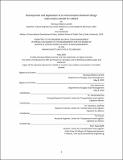Development and Application of an Immunization Network Design Optimization Model for UNICEF
Author(s)
Hashimoto, Yuto; Ribeiro Carretti, Henrique
DownloadSupply Chain Management capstone research project (8.108Mb)
Metadata
Show full item recordAbstract
Over the past five years, immunization coverage in Sub-Saharan Africa has stagnated at 72%.
Immunization supply chains are expensive and complicated, and creating a model that helps
optimize these supply chains is of great importance not only for people’s health but also for the
efficient use of limited budget in developing nations. Most existing supply chain optimization models
aim at minimizing costs or maximizing profit, which do not always fit in the context of humanitarian
logistics. Also, they regard the demand as exogenous, but the proximity to health centers may affect
people’s demand. Therefore, the objective of this project is to build an optimization model for
vaccine network design that aims to maximize the access to immunization and incorporates the
endogenous demand function. We take a two-step approach to build the model, and each step has a
process of model formulation and validation. The first step is to formulate the toy model, a
simplified version of the model using an example dataset, to understand the basic behavior of the
model. With the toy model validated, we formulate the final model, which incorporates more
complexities based on the real dataset. Following that, a case study of The Gambia was conducted to
validate the effectiveness of our model and to provide useful insights in a real-world context
regarding the applicability of our solution procedure. The results of the case study show the ability of
the model to increase access to immunization. Through the opening of new outreach sites and the
optimization of outreach allocation and scheduling, it would be possible to increase the
immunization access from 91% to 97.1%. Furthermore, our analysis contributes by showing that the
better determination of the shape of a demand coverage function is a promising area of future
research.
Date issued
2020-07-24Keywords
Humanitarian, Network Design, Healthcare